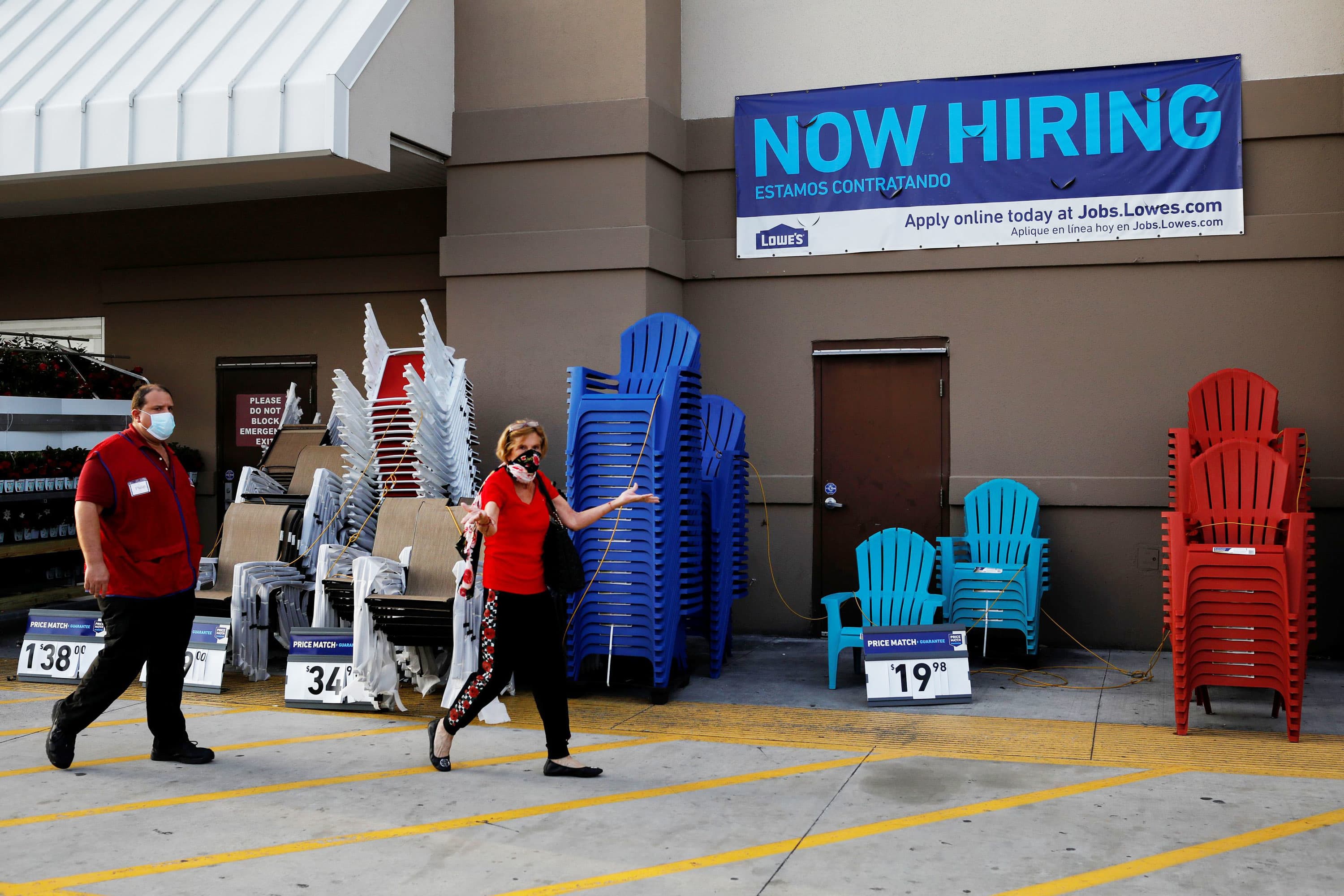
A “Now Hiring” sign advertising jobs at Lowe’s is seen as the spread of the coronavirus disease (COVID-19) continues, in Homestead, Florida, U.S., April 17, 2020.
Marco Bello | Reuters
Payroll tax cuts could be in the next round of coronavirus aid legislation, if President Donald Trump gets his way.
Vice President Mike Pence reiterated the administration’s support for the idea during a Friday morning interview on CNBC.
“We’ve got to have a payroll tax cut,” Pence said. “We’ve got to have the kind of pro-growth policies that will continue this economic recovery.”
The idea comes as lawmakers are poised to consider their next efforts to support the economy. House Democrats recently passed a bill that would include another round of $1,200 stimulus checks and an extension of the extra $600 per week in unemployment benefits to the end of January.
But that proposal would need to get past Senate Republicans.
Payroll tax cuts were not in that bill. But it’s an idea that the president has mentioned repeatedly.
How a payroll tax cut would work
Payroll taxes are withheld from workers’ wages and are used to fund government programs, such as Social Security and Medicare.
For Social Security, employee wages are subject to a 6.2% tax up to $137,700 in 2020. Workers also pay a Medicare tax of 1.45%.
Employers match what workers contribute by also putting in 6.2% toward Social Security and 1.45% for Medicare.
More from Personal Finance:
What the unemployment rate actually means and why it’s so important
What to do if you still haven’t received your $1,200 stimulus check
The stimulus proposals that could put more money in your wallet
Of note, some employers have been allowed to defer paying select payroll taxes through the end of the year, particularly Social Security and Railroad Retirement levies, to help them recover from the coronavirus pandemic.
Workers are also subject to other payroll taxes. If they earn more than $200,000 individually, or $250,000 if they are married and filing jointly, they pay an additional 0.9% Medicare surtax.
Self-employed individuals pay 12.4% toward Social Security and 2.9% for Medicare, for a total of 15.3%. They also are subject to the Medicare surtax for wages over $200,000.
What experts have to say about the idea
Payroll tax cuts are not the strongest financial aid strategy that lawmakers currently have on the table, for a couple of reasons, according to Howard Gleckman, senior fellow at the Urban-Brookings Tax Policy Center.
The first issue is that it really exclusively benefits people who are working. “It’s not targeted particularly well to those who need it the most,” he said.
The second issue is that, by cutting payroll taxes, “you are blowing an even bigger hole in the Social Security trust fund, which is already in trouble,” Gleckman said.
“This would make it significantly worse,” he said.
A recent study from the Wharton School at the University of Pennsylvania found that Social Security’s trust funds could run out up to four years earlier due to the negative effects of the coronavirus pandemic.
Payroll tax cuts would also provide an incentive for employees to go back to work. “The question is, is it the right time to do that?” Gleckman said, given the health risks the coronavirus poses.
Other strategies lawmakers are weighing include continuing extra unemployment benefits, which would encourage people to stay home to avoid the pandemic, or back-to-work bonuses, which would reward them for resuming their jobs.
A payroll tax cut could duplicate other efforts that went into effect with the CARES Act, particularly the deferrals on these levies for employers, said Garrett Watson, senior policy analyst at the Tax Foundation. Such a cut would need to be combined with efforts to provide relief to those who are not working, he said.
Still, some lawmakers might not be ready to give up on the idea.
“This may become a pretty big point of contention … so that’s something we’re going to be watching very closely,” Watson said. “It may be an item that they think is non-negotiable.”



